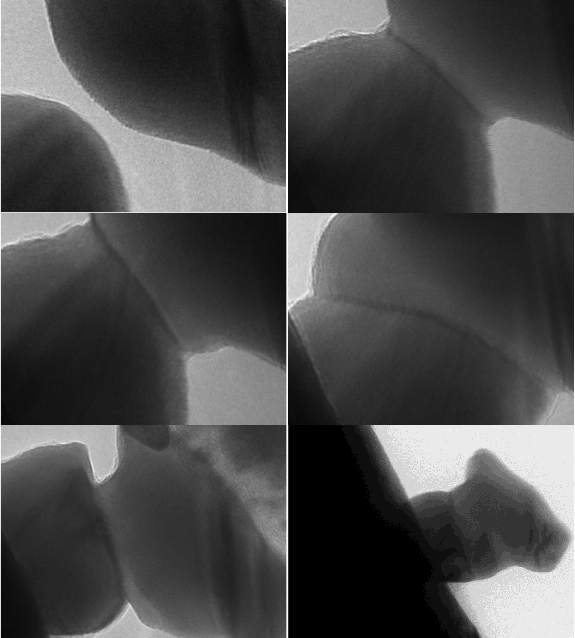
TEM sequence of a single grain boundary formation, growth, rotation, sliding and migration between two Au nanoparticles. Scale bars are 10 nm.
It is well established that matter behaves in a different manner at the nanoscale compared with their bulk counterparts. Mostly, this is due to confinement of electron, increased surface to volume ratio, composition, etc.; therefore, the study of matter at the nanoscale is of crucial relevance to continue the development of nano-devices that surrounds our everyday life.
Most of the electronic devices use electrical contacts that (usually gold), if not made properly, can fail due to unknown effects when reducing features at the nanoscale. PREM researchers at UTSA have developed a technique to study single gold contacts (single grain boundary) while directly observing the interface in an electron microscope. The grain boundary presents a liquid-like behavior and is free to rotate as one of the nanoparticles is moved manually. Moreover, surface diffusion coefficient and grain boundary energies can be computed from the experimental observations.
This methodology can be used for particles for many other metals, oxides, semiconductors, etc., or a combination of them. With these many possibilities, measurements of physical properties of different systems will be done in the near future.
Gilberto Casillas (Ph.D. Student)
Miguel Yacaman (Advisor)
Download this highlight

